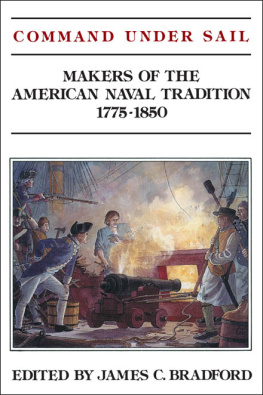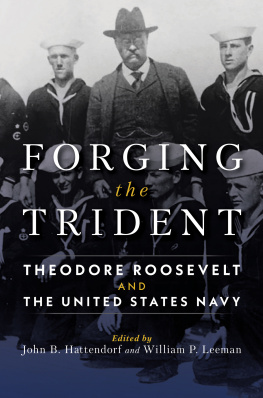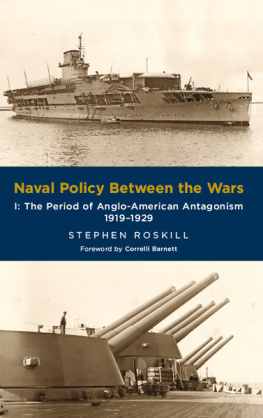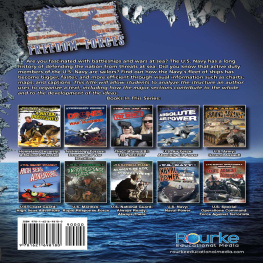COMMAND UNDER SAIL

COMMAND UNDER SAIL
MAKERS OF THE AMERICAN NAVAL TRADITION 17751850

EDITED BY JAMES C. BRADFORD
This book has been brought to publication by the generous assistance of Marguerite and Gerry Lenfest
First Naval Institute Press paperback edition published 2012.
Copyright 1985
by the United States Naval Institute
Annapolis, Maryland
All rights reserved. No part of this book
may be reproduced without written permission
from the publisher.
Library of Congress Cataloging in Publication Data
Main entry under title:
Command under sail.
Bibliography: p.
Includes index.
1. United States. NavyOfficersBiography
Addresses, essays, lectures. 2. United States
History, NavalTo 1900Addresses, essays, lectures.
I. Bradford, James C.
V62.C662 1984 359.00922 IB] 84-29584
ISBN 978-1-61251-261-7
17 16 15 14 13 12 6 5 4 3 2 1
First printing
To my parents,
Raymond and Eleanor
CONTENTS

William M. Fowler, Jr.
James C. Bradford
William James Morgan
Christopher McKee
Craig Symonds
John K. Mahon
Edward K. Eckert
David F. Long
John H. Schroeder
K. Jack Bauer
Linda M. Maloney
Harold D. Langley


T he U.S. Navy was born just as the Age of Sail reached its climax. During this era the traditions and the style that would guide and characterize the Navy for the next century and a half were set. It was a trying time. Until well after the Revolution there were Americans who seriously doubted the desirability of having a navy, and during the early nineteenth century the appropriate type of navy remained under debate. During the next fifty years all navies would begin the transition to the modern era as propulsion changed from sail to steam, hulls from wood to iron and steel, and armaments from smoothbore cannon to rifled guns; but the basis of the U. S. Navy was already laid.
The history of the early Navy has been told in terms of battles and wars, ship construction, and administration, but there has been not a single volume of history spanning the Age of Sail that surveys all these fields. In addition, as a modern naval leader has written, Important as ships are, naval history is made by men. This is a truism worth remembering. The biographical approach to naval history makes the era more concrete and vivid. Viewing it through the eyes and careers of participants one can more fully understand the strengths and weaknesses of the young service and the variety of roles played by early naval forces.
The American sailing navy did not decisively defeat its European rivals in the American Revolution, the Quasi-War with France, or the War of 1812; but it did win important battles that influenced the outcome of those conflicts. It is not too much, for example, to credit the victories of Oliver Hazard Perry on Lake Erie and Thomas Macdonough at Plattsburgh with paving the way for the status quo ante bellum Peace of Ghent which ended Americas second war with Britain. Triumphs such as John Paul Joness capture of the Serapis and Isaac Hulls defeat of the Guerrire raised public morale in particularly difficult times.
But all was not gunsmoke and grapeshot, cannon and cutlass. The young Navy needed more than battle leaders to launch it. Strategists, administrators, and educators were equally important. The quality of the men called upon to fill these roles was not always high, and the problems they faced were not easily solvable. The provincialism of Esek Hopkins represented one of the main weaknesses of the Continental Navy. The nepotism John Paul Jones complained about during the Revolution did not disappear but continued into the nineteenth century, exemplified by such naval families as the Perrys and the Rodgerses. However precarious its start, the U. S. Navy soon became institutionalized (some would say ossified) and in need of reform, and leaders emerged from within the officer corps to press for change.
These biographical studies, all written especially for this volume, are interpretive rather than merely descriptive. One element of interpretation is the authors choice of which aspects of their subjects lives to emphasize. Robert Stockton, for example, is most commonly remembered for his command of the Pacific Squadron that helped capture California during the Mexican War, but Harold D. Langley emphasizes his role as a reformer because it was in this capacity that he had the most lasting influence on the Navy. John Rodgers is most famous for his operations in the Mediterranean, but they are not so important in American history as his actions in defense of Baltimore during the War of 1812 or so important to the Navy as his long service on the Board of Naval Commissioners. David Porters service in the Mexican Navy and John Paul Joness in the Imperial Russian Navy are virtually ignored because they had very little impact on the U. S. Navy. Thus, the essays are not simply short biographies.
For this reason authors have been selected whose knowledge of Americas naval heritage extends beyond the individual about whom they write. Some have written on their subject before, but all offer more than distillations of the views presented elsewhere. There has been no attempt to impose a uniformity of interpretation upon the essays. In his essay, Edward Eckert identifies Edward Preble as a major influence upon the development of young Thomas Macdon-ough as a naval officer. Christopher McKee questions the validity of accepting the common belief that most of the American officers winning victories in the War of 1812 were Prebles Boys. He concludes that the evidence supporting this view is circumstantial and that Prebles direct impact upon such officers as Macdonough is difficult to document. The authors views are their own, and each contributor has provided suggestions for additional reading to guide those whose interest they arouse.
The selection of subjects for this volume was not easy. The officers chosen neither were representative in the sense of being average or common, nor were they the great men that a Thomas Carlyle or Sidney Hook might choose. They include many of the most famous, such as John Paul Jones, Oliver Hazard Perry, and Stephen Decatur. But influence and importance are not necessarily linked to fame or battle command, and a number of the selections, for example, Esek Hopkins and Robert Stockton, are less obvious. Some, such as David Porter, were selected because their careers illustrated multiple themes. The exclusion of other officers, such as Thomas Truxtun and James Biddle, is not a judgment on their importance but reflects the desire to keep this work a manageable size. In selecting the subjects, an effort was made to avoid Whiggish anachronism. The events of the Navys early history did not lead inexorably to the present. The U. S. Navy was not predestined to become the worlds supreme service.
Next page






